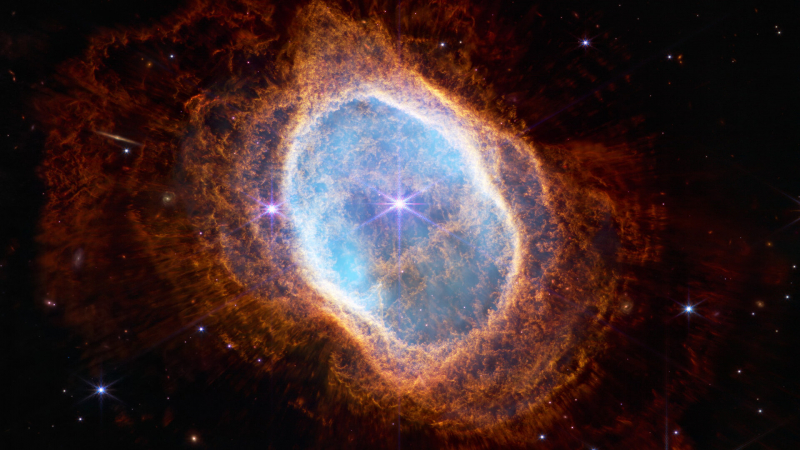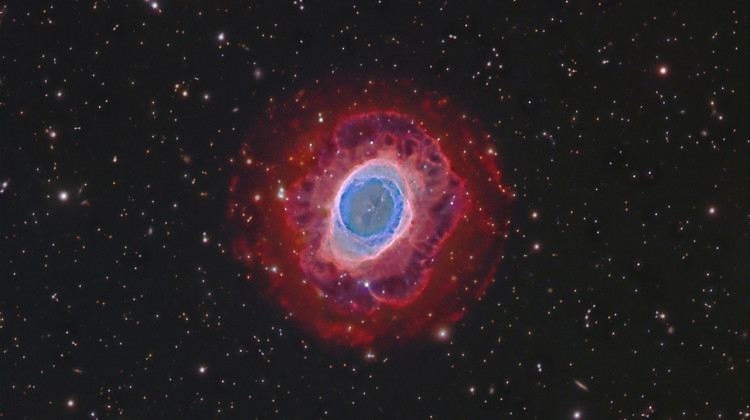Ring Nebula
The Ring Nebula, which is located 2,000 light-years from Earth, provides a glimpse of the ominous destiny that our solar will eventually face after billions of years. When stars like our own pass away, they don't erupt violently like supernovae. Simply said, they aren't big enough for it. They gradually shed their outer layers instead, eventually spreading out like the Ring Nebula. They also leave a white dwarf, which is a piece of the star's core, behind.
This stunning photograph, taken by Hubble in 1998, contains each of these characteristics. A careful examination of the planetary nebula has recently revealed that the blue regions, which are made up of helium, hydrogen, and oxygen, are actually shaped more like a football that is intersecting with the red colored donut-shaped nitrogen and sulfur gasses.
Initially, it was believed that the Ring Nebula was shaped exactly as we see it. If we looked at the nebula from a different angle, it may appear more like a football had been spiked straight through the reddish gasses.












